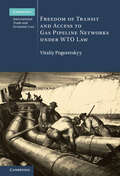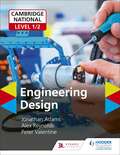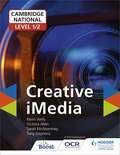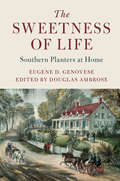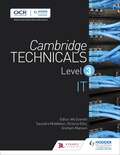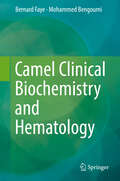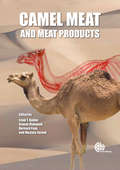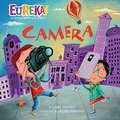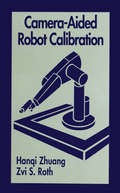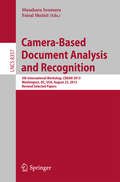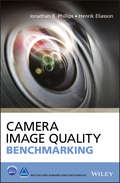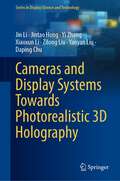- Table View
- List View
Cambridge International Trade and Economic Law: Export Restrictions on Critical Minerals and Metals
by Ilaria EspaConventional wisdom on the insufficiency of existing WTO disciplines on export restrictions has triggered momentum on the issue. In this book, Ilaria Espa offers a comprehensive analysis of the scope and coverage of WTO disciplines on export restrictions in light of emerging case law. She investigates whether such rules still provide a sufficient, credible and effective framework capable of preventing abuses in the use of export restrictive measures on critical minerals and metals during a period of economic crisis and change in international trade patterns. Giving a broad overview of the export restrictions applied to these materials, Espa identifies distinctive features in the proliferation of export barriers and analyses the existing WTO rules to reveal their scope, gaps and inconsistencies. She goes on to present solutions based upon her findings with the aim of bringing more coherence and equity to WTO rules on the export side.
Cambridge International Trade and Economic Law: Freedom of Transit and Access to Gas Pipeline Networks under WTO Law
by Vitaliy PogoretskyyGas transit is network-dependent and it cannot be established without the existence of pipeline infrastructure in the territory of a transit state or the ability to access this infrastructure. Nevertheless, at an inter-regional level, there are no sufficient pipeline networks allowing gas to travel freely from a supplier to the most lucrative markets. The existing networks are often operated by either private or state-controlled vertically integrated monopolies who are often reluctant to release unused pipeline capacity to their potential competitors. These obstacles to gas transit can diminish the gains from trade for states endowed with natural gas resources, including developing landlocked countries, as well as undermine WTO Members' energy security and their attempts at sustainable development. This book explains how the WTO could play a more prominent role in the international regulation of gas transit and promote the development of an international gas market.
Cambridge Manuals in Archaeology: Applied Soil Micromorphology in Archaeology (Cambridge Manuals in Archaeology)
by Paul Goldberg Richard I. MacphailApplied Soils and Micromorphology in Archaeology provides the most up-to-date information on soil science and its applications in archaeology. Based on more than three decades of investigations and experiments, the volume demonstrates how description protocols and complimentary methods (SEM/EDS, microprobe, micro-FTIR, bulk soil chemistry, micro- and macrofossils) are used in interpretations. It also focuses on key topics, such as palaeosols, cultivation, and occupation surfaces, and introduces a range of current issues, such as site inundation, climate change, settlement morphology, herding, trackways, industrial processes, funerary features, and site transformation. Structured around important case studies, Applied Soils and Micromorphology in Archaeology is thoroughly-illustrated, with color plates and figures, tables and other ancillary materials on its website (www. cambridge. org/9781107011380); chapter appendices can be accessed separately using the web (www. geoarchaeology. info/asma). This new book will serve as an essential volume for all archaeological inquiry about soil.
Cambridge National Level 1/2 Award/Certificate in Engineering Design
by Jonathan Adams Alex Reynolds Peter ValentineHelp your learners develop their knowledge and prepare for assessment with this brand-new classroom resource - the only textbook tailored to the Cambridge National Level 1/2 Award and Certificate in Engineering Design. Covering all four units, this Student Book will:- develop learners' skills and confidence in preparation for assessment with detailed guidance on each learning outcome- contextualise knowledge with activities and case studies throughout- include practice questions to help with unit R105: Design briefs, design specifications and user requirements- provide expert advice to help students understand the format of the centre-assessed units and develop their portfolio of evidence.
Cambridge National Level 1/2 Creative iMedia
by Kevin Wells Victoria Allen Sarah McAtominey Tony StephensStrengthen learners' grasp of the most challenging units and develop the skills required for success with this student book mapped to the Cambridge National Level 1 / 2 in Creative iMedia. Covering the mandatory and optional units, this textbook will help to build knowledge, reinforce classroom learning and test the students' understanding.· Builds students' knowledge with clearly-focused content to aid progression and activities to assess understanding.· Prepares your students for both internal and external assessment with opportunities to test and consolidate understanding.· Support your students' progress through the course with the only textbook published for the Cambridge National Level 1 /2 in Creative iMedia.
Cambridge National Level 1/2 Creative iMedia
by Kevin Wells Victoria Allen Sarah McAtominey Tony StephensStrengthen learners' grasp of the most challenging units and develop the skills required for success with this student book mapped to the Cambridge National Level 1 / 2 in Creative iMedia. Covering the mandatory and optional units, this textbook will help to build knowledge, reinforce classroom learning and test the students' understanding.· Builds students' knowledge with clearly-focused content to aid progression and activities to assess understanding.· Prepares your students for both internal and external assessment with opportunities to test and consolidate understanding.· Support your students' progress through the course with the only textbook published for the Cambridge National Level 1 /2 in Creative iMedia.
Cambridge Scientific Minds
by Peter Harman Simon MittonSince the 'scientific revolution' of the seventeenth century, a great number of distinguished scientists and mathematicians have been associated with the University of Cambridge. Cambridge Scientific Minds provides a portrait of some of the most eminent scientists associated with the University over the past 400 years, including accounts of the work of three of the greatest figures in the entire history of science, Isaac Newton, Charles Darwin and James Clerk Maxwell. The chronological balance reflects the increasing importance of science in the recent history of the University. The book comprises personal memoirs and historical essays, including contributions by leading Cambridge scientists. Cambridge Scientific Minds will be of interest not only to graduates of the University, science students and historians of science, but to anyone wishing to gain an insight into some of the greatest scientific minds in history.
Cambridge Series in Chemical Engineering: Introduction to Chemical Engineering Fluid Mechanics
by Deen William M.Designed for introductory undergraduate courses in fluid mechanics for chemical engineers, this stand-alone textbook illustrates the fundamental concepts and analytical strategies in a rigorous and systematic, yet mathematically accessible manner. Using both traditional and novel applications, it examines key topics such as viscous stresses, surface tension, and the microscopic analysis of incompressible flows which enables students to understand what is important physically in a novel situation and how to use such insights in modeling. The many modern worked examples and end-of-chapter problems provide calculation practice, build confidence in analyzing physical systems and help develop engineering judgment. The book also features a self-contained summary of the mathematics needed to understand vectors and tensors, and explains solution methods for partial differential equations. Including a full solutions manual for instructors available at www. cambridge. org/deen, this balanced textbook is the ideal resource for a one-semester course.
Cambridge Series in Chemical Engineering: Design and Processing of Particulate Products
by Jim LitsterWith this unique and comprehensive text, readers will gain the quantitative tools needed to engineer the particulate processes and products that are ubiquitous in modern life. Covering a series of particle and particulate delivery form design processes, with emphasis on design and operation to control particle attributes, and supported by many worked examples, it is essential reading for students and practitioners. Topics covered include a range of particle design processes such as crystallization and precipitation, granulation, grinding, aerosol processes and spray drying, as well as forms of delivery such as granules, tablets, dry powders, and aerosols. Readers will learn from real-world examples how the primary particle properties and the structure and properties of the delivery form can lead to high performance products, ranging from pharmaceuticals, consumer goods and foods, to specialty chemicals, paints, agricultural chemicals and minerals.
Cambridge Social and Cultural Histories: Renaissance Ethnography and the Invention of the Human
by Surekha DaviesGiants, cannibals and other monsters were a regular feature of Renaissance illustrated maps, inhabiting the Americas alongside other indigenous peoples. In a new approach to views of distant peoples, Surekha Davies analyzes this archive alongside prints, costume books and geographical writing. Using sources from Iberia, France, the German lands, the Low Countries, Italy and England, Davies argues that mapmakers and viewers saw these maps as careful syntheses that enabled viewers to compare different peoples. In an age when scholars, missionaries, native peoples and colonial officials debated whether New World inhabitants could – or should – be converted or enslaved, maps were uniquely suited for assessing the impact of environment on bodies and temperaments. Through innovative interdisciplinary methods connecting the European Renaissance to the Atlantic world, Davies uses new sources and questions to explore science as a visual pursuit, revealing how debates about the relationship between humans and monstrous peoples challenged colonial expansion.
Cambridge Studies in Early Modern British History: The Smoke of London
by William M. CavertThe Smoke of London uncovers the origins of urban air pollution, two centuries before the industrial revolution. By 1600, London was a fossil-fuelled city, its high-sulfur coal a basic necessity for the poor and a source of cheap energy for its growing manufacturing sector. The resulting smoke was found ugly and dangerous throughout the seventeenth and eighteenth centuries, leading to challenges in court, suppression by the crown, doctors' attempts to understand the nature of good air, increasing suburbanization, and changing representations of urban life in poetry and on the London stage. Neither a celebratory account of proto-environmentalism nor a declensionist narrative of degradation, The Smoke of London recovers the seriousness of pre-modern environmental concerns even as it explains their limits and failures. Ultimately, Londoners learned to live with their dirty air, an accommodation that reframes the modern process of urbanization and industrial pollution, both in Britain and beyond.
Cambridge Studies in European Law and Policy: EU Renewable Electricity Law and Policy
by Tim Maxian RuscheThere are two basic policy tools for promoting renewable electricity: price regulation (feed-in tariffs) and quantity regulation (green certificates). In economic theory, they are equally efficient. Contrary to conventional thinking, the author demonstrates that under real-world conditions, price regulation is more efficient. EU law obliges Member States to put support schemes in place, but leaves their design to national authorities. They need, however, to comply with EU state aid and internal market rules, and their financing may not result in import duties and discriminatory taxation. This book provides a detailed analysis of the decisions practice adopted by the Commission and the case law of the Union Courts. As support schemes mature, has time not come for putting an end to regulatory competition? With huge efficiency gains to be expected, the author expertly examines the political obstacles and sets out three different pathways to achieve EU-wide harmonization.
Cambridge Studies on the American South: Southern Planters at Home (Cambridge Studies on the American South)
by Genovese Douglas Douglas Ambrose Eugene D. Ambrose Eugene D.This book examines the home and leisure life of planters in the antebellum American South. Based on a lifetime of research by the late Eugene Genovese (1930-2012), with an introduction and epilogue by Douglas Ambrose, The Sweetness of Life presents a penetrating study of slaveholders and their families in both intimate and domestic settings: at home; attending the theatre; going on vacations to spas and springs; throwing parties; hunting; gambling; drinking and entertaining guests, completing a comprehensive portrait of the slaveholders and the world that they built with slaves. Genovese subtly but powerfully demonstrates how much politics, economics, and religion shaped, informed, and made possible these leisure activities. A fascinating investigation of a little-studied aspect of planter life, The Sweetness of Life broadens our understanding of the world that the slaveholders and their slaves made; a tragic world of both 'sweetness' and slavery.
Cambridge Studies on the American South: The Georgia Peach
by Okie William ThomasImprinted on license plates, plastered on billboards, stamped on the tail side of the state quarter, and inscribed on the state map, the peach is easily Georgia's most visible symbol. Yet Prunus persica itself is surprisingly rare in Georgia, and it has never been central to the southern agricultural economy. Why, then, have southerners - and Georgians in particular - clung to the fruit? The Georgia Peach: Culture, Agriculture, and Environment in the American South shows that the peach emerged as a viable commodity at a moment when the South was desperate for a reputation makeover. This agricultural success made the fruit an enduring cultural icon despite the increasing difficulties of growing it. A delectable contribution to the renaissance in food writing, The Georgia Peach will be of great interest to connoisseurs of food, southern, environmental, rural, and agricultural history.
Cambridge Technicals Level 3 IT
by Victoria Ellis Graham Manson Saundra MiddletonExam Board: CambridgeLevel: KS4Subject: ITFirst Teaching: September 2016First Exam: June 207Support your teaching of the new Cambridge Technicals 2016 suite with Cambridge Technical Level 3 IT, developed in partnership between OCR and Hodder Education; this textbook covers each specialist pathway and ensures your ability to deliver a flexible course that is both vocationally focused and academically thorough.Cambridge Technical Level 3 IT is matched exactly to the new specification and follows specialist pathways in IT Infrastructure Technician, Emerging Digital Technology Practitioner, Application Developer, and Data Analyst.- Ensures effective teaching of each specialist pathway offered within the qualification.- Focuses learning on the skills, knowledge and understanding demanded from employers and universities.- Provides ideas and exercises for the application of practical skills and knowledge.- Developed in partnership between Hodder Education and OCR, guaranteeing quality resources which match the specification perfectly
Cambridge Technicals Level 3 IT
by Victoria Ellis Graham Manson Saundra MiddletonExam Board: CambridgeLevel: Key Stage 4Subject: ITFirst Teaching: September 2016First Exam: June 207Support your teaching of the new Cambridge Technicals 2016 suite with Cambridge Technical Level 3 IT, developed in partnership between OCR and Hodder Education; this textbook covers each specialist pathway and ensures your ability to deliver a flexible course that is both vocationally focused and academically thorough.Cambridge Technical Level 3 IT is matched exactly to the new specification and follows specialist pathways in IT Infrastructure Technician, Emerging Digital Technology Practitioner, Application Developer, and Data Analyst.- Ensures effective teaching of each specialist pathway offered within the qualification.- Focuses learning on the skills, knowledge and understanding demanded from employers and universities.- Provides ideas and exercises for the application of practical skills and knowledge.- Developed in partnership between Hodder Education and OCR, guaranteeing quality resources which match the specification perfectlyHodder Education have worked with OCR to make updates to our Cambridge Technicals textbooks to bring them more closely in line with the model assignment course requirements. We would like to let you know about a recent change to this textbook, updated pages which are now available free of charge as a PDF when you click on the 'Amended Pages' link on the left of this webpage.
Cambridge Texts in Biomedical Engineering: Quantitative Biomedical Optics
by Bigio, Irving J. and Fantini, Sergio Irving J. Bigio Sergio FantiniThis is the textbook and reference resource that instructors, students, and researchers in biomedical optics have been waiting for. Comprehensive and up to date, it covers a broad range of areas in biomedical optics, from light interactions at the single-photon and single-biomolecule levels, to the diffusion regime of light propagation in tissue. Subjects covered include spectroscopic techniques (fluorescence, Raman, infrared, near-infrared, and elastic scattering), imaging techniques (diffuse optical tomography, photoacoustic imaging, several forms of modern microscopy, and optical coherence tomography), and laser-tissue interactions, including optical tweezers. Topics are developed from the fundamental principles of physical science, with intuitive explanations, while rigorous mathematical formalisms of theoretical treatments are also provided. For each technique, descriptions of relevant instrumentation and examples of biomedical applications are outlined, and each chapter benefits from references and suggested resources for further reading, and exercise problems with answers to selected problems.
Cambridge Texts in Biomedical Engineering: Biomedical Engineering
by W. Mark SaltzmanThis is an ideal text for an introduction to biomedical engineering. The book presents the basic science knowledge used by biomedical engineers at a level accessible to all students and illustrates the first steps in applying this knowledge to solve problems in human medicine. Biomedical engineering now encompasses a range of fields of specialization including bioinstrumentation, bioimaging, biomechanics, biomaterials, and biomolecular engineering. This introduction to bioengineering assembles foundational resources from molecular and cellular biology and physiology and relates them to various sub-specialties of biomedical engineering. The first two parts of the book present basic information in molecular/cellular biology and human physiology; quantitative concepts are stressed in these sections. Comprehension of these basic life science principles provides the context in which biomedical engineers interact. The third part of the book introduces the sub-specialties in biomedical engineering, and emphasizes - through examples and profiles of people in the field - the types of problems biomedical engineers solve.
Camel Clinical Biochemistry and Hematology
by Bernard Faye Mohammed BengoumiThis work brings together a wealth of data regarding the reference values and factors of variation in biochemical parameters used by camel veterinarians and scientists to determine these animals’ nutritional and clinical status. It also explores several technical aspects involved in determining these parameters, sampling procedures, and essential elements in the interpretation of the results. Though many texts are available on small and large ruminants, much less is known about species confined to the marginal zones of tropical and Mediterranean countries, such as camels. This book addresses precisely this research gap, on the one hand by presenting an extensive review of the literature, and on the other by synthesizing the outcomes of the authors’ numerous previous works. In veterinary medicine, blood tests to help diagnose diseases in cattle were first proposed nearly a century ago, but were mainly developed in the 1960s, initially at specialized research or veterinary services laboratories, and eventually, with the advent of new equipment and the miniaturization of the analyzers, finding their way into veterinarians’ cabinets. Beyond their diagnostic value, veterinary surgeons and zootechnicians also speculated on the potential use of blood tests to evaluate animals’ nutritional status. Thus, a whole range of analyses are now proposed to the stakeholders responsible for animal health. Such analyses could help to define a metabolic profile, which would offer a valuable decision-making tool for experts and researchers alike.
Camel Meat and Meat Products
by Bernard Faye Osman Mahgoub Mohammed Tageldin Msafiri Mbaga David Favis-Mortlock A Bekhit Mustafa Farouk Isam KadimCamel meat has many benefits as a meat product. It has low fat content and is highly nutritious, and has potential to be used to combat hyperacidity, hypertension, pneumonia and respiratory disease. This book reviews up-to-date literature on camel meat and meat products, carcass and meat quality characteristics, muscle structure, post-mortem analysis and the nutritive value to humans. A comparatively small component of global meat consumption, camel meat has the potential to undergo an explosion of production worldwide, and currently farming for camel meat in Asia, Africa, Latin America and Australia is undergoing significant expansion. The potential of camel meat in helping to meet projected world food shortages, and being sustainably farmed, is also explored by the editors.
Camera: Eureka! The Biography of an Idea (Eureka! The Biography of an Idea)
by Laura DriscollSay "Cheese!" Around the world, millions of pictures are taken every second. Here is a "biography" of the camera, an essential invention that helps people capture the world around them!From the great Chinese thinker Mozi to Aristotle to Louis Daguerre and George Eastman, people have noticed the interesting effects of light passing through a small opening--the basic idea of a camera. Camera is a fun and informative look at an invention that makes a huge difference in our lives. This STEAM nonfiction title is part of the new Eureka! series, with each book focusing on one groundbreaking, world-changing discovery that millions of people use every single day.
Camera-Aided Robot Calibration
by Hangi Zhuang Zvi S. RothRobot calibration is the process of enhancing the accuracy of a robot by modifying its control software. This book provides a comprehensive treatment of the theory and implementation of robot calibration using computer vision technology. It is the only book to cover the entire process of vision-based robot calibration, including kinematic modeling, camera calibration, pose measurement, error parameter identification, and compensation.The book starts with an overview of available techniques for robot calibration, with an emphasis on vision-based techniques. It then describes various robot-camera systems. Since cameras are used as major measuring devices, camera calibration techniques are reviewed.Camera-Aided Robot Calibration studies the properties of kinematic modeling techniques that are suitable for robot calibration. It summarizes the well-known Denavit-Hartenberg (D-H) modeling convention and indicates the drawbacks of the D-H model for robot calibration. The book develops the Complete and Parametrically Continuous (CPC) model and the modified CPC model, that overcome the D-H model singularities. The error models based on these robot kinematic modeling conventions are presented.No other book available addresses the important, practical issue of hand/eye calibration. This book summarizes current research developments and demonstrates the pros and cons of various approaches in this area. The book discusses in detail the final stage of robot calibration - accuracy compensation - using the identified kinematic error parameters. It offers accuracy compensation algorithms, including the intuitive task-point redefinition and inverse-Jacobian algorithms and more advanced algorithms based on optimal control theory, which are particularly attractive for highly redundant manipulators. Camera-Aided Robot Calibration defines performance indices that are designed for off-line, optimal selection of measurement configurations. It then describes three approaches: closed-form, gradient-based, and statistical optimization. The included case study presents experimental results that were obtained by calibrating common industrial robots. Different stages of operation are detailed, illustrating the applicability of the suggested techniques for robot calibration. Appendices provide readers with preliminary materials for easier comprehension of the subject matter. Camera-Aided Robot Calibration is a must-have reference for researchers and practicing engineers-the only one with all the information!
Camera-Based Document Analysis and Recognition: 5th International Workshop, CBDAR 2013, Washington, DC, USA, August 23, 2013, Revised Selected Papers (Lecture Notes in Computer Science #8357)
by Faisal Shafait Masakazu IwamuraThis book constitutes the thoroughly refereed post-workshop proceedings of the 5th International Workshop on Camera-Based Document Analysis and Recognition, CBDAR 2013, held in Washington, DC, USA, in August 2013. The 14 revised full papers presented were carefully selected during two rounds of reviewing and improvement from numerous original submissions. Intended to give a snapshot of the state-of-the-art research in the field of camera based document analysis and recognition, the papers are organized in topical sections on text detection and recognition in scene images and camera-based systems.
Camera Image Quality Benchmarking
by Jonathan B. Phillips Henrik EliassonThe essential guide to the entire process behind performing a complete characterization and benchmarking of cameras through image quality analysis Camera Image Quality Benchmarking contains the basic information and approaches for the use of subjectively correlated image quality metrics and outlines a framework for camera benchmarking. The authors show how to quantitatively compare image quality of cameras used for consumer photography. This book helps to fill a void in the literature by detailing the types of objective and subjective metrics that are fundamental to benchmarking still and video imaging devices. Specifically, the book provides an explanation of individual image quality attributes and how they manifest themselves to camera components and explores the key photographic still and video image quality metrics. The text also includes illustrative examples of benchmarking methods so that the practitioner can design a methodology appropriate to the photographic usage in consideration. The authors outline the various techniques used to correlate the measurement results from the objective methods with subjective results. The text also contains a detailed description on how to set up an image quality characterization lab, with examples where the methodological benchmarking approach described has been implemented successfully. This vital resource: Explains in detail the entire process behind performing a complete characterization and benchmarking of cameras through image quality analysis Provides best practice measurement protocols and methodologies, so readers can develop and define their own camera benchmarking system to industry standards Includes many photographic images and diagrammatical illustrations to clearly convey image quality concepts Champions benchmarking approaches that value the importance of perceptually correlated image quality metrics Written for image scientists, engineers, or managers involved in image quality and evaluating camera performance, Camera Image Quality Benchmarking combines knowledge from many different engineering fields, correlating objective (perception-independent) image quality with subjective (perception-dependent) image quality metrics.
Cameras and Display Systems Towards Photorealistic 3D Holography (Series in Display Science and Technology)
by Jin Li Jintao Hong Yi Zhang Xiaoxun Li Zilong Liu Yanyan Liu Daping ChuThis book presents recent advances in three-dimensional (3D) imaging and display frameworks, encompassing three categories of 3D imaging and display technologies. The first category is nonphotorealistic 3D approaches based on conventional optical cameras to implement 3D stereoscopic observation of a scene. In the context of nonphotorealistic 3D imaging and reconstruction systems, the authors introduce general principles and also demonstrate camera calibration for 3D imaging, smart cameras, and full-link imaging methods using the optical modulation transfer function to improve imaging quality in conventional cameras. The second category is based on light-ray light field technology to achieve photorealistic 3D imaging and displays. In the context of light-ray light field systems, two approaches capable of light-ray light field 3D imaging by utilizing a camera array or a lens array are demonstrated. Accordingly, light-ray light field display approaches comprising head-mounted displays and integral displays are also introduced. The third category is also photorealistic 3D imaging and display technology, which is based on holography (i.e., diffraction or wavefront light field). In the corresponding holographic displays, the authors introduce 3D holographic displays from three elements: algorithms, devices, and systems, involving fast hologram generation algorithms, wide-viewing-angle display systems, and metasurface holography, etc. Including an investigative roadmap for future progress in optical imaging and 3D display systems, this book is essential reading for scientists and engineers in academia and industry who are interested in next-generation imaging and display concepts for 3D visual sensing systems.

